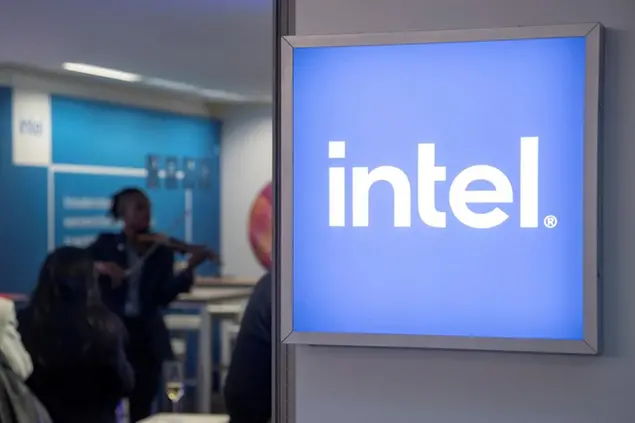PHOTO
Intel said on Thursday it would cut more than 15% of its workforce, some 17,500 people, and suspend its dividend starting in the fourth quarter as the chipmaker pursues a turnaround focused on its money-losing manufacturing business.
It also forecast third-quarter revenue below market estimates, grappling with a pullback in spending on traditional data center semiconductors and a focus on AI chips, where it lags rivals.
Shares of Santa Clara, California-based Intel slumped 20% in extended trade, setting the chipmaker up to lose more than $24 billion in market value. The stock had closed down 7% on Thursday, in tandem with a plunge in U.S. chip stocks after a conservative forecast from Arm Holdings on Wednesday.
The results did not rock the broader chip industry.
AI powerhouse Nvidia and smaller rival AMD ticked up after hours, underscoring how well-positioned they were to take advantage of the AI boom, and Intel's relative disadvantage.
"I need less people at headquarters, more people in the field, supporting customers," CEO Pat Gelsinger told Reuters in an interview, talking about the job cuts. On the dividend suspension, he said: "Our objective is to ... pay a competitive dividend over time, but right now, focusing on the balance sheet, deleveraging."
Intel, which employed 116,500 people as of June 29, excluding some subsidiaries, said the majority of the job cuts would be completed by the end of 2024. In April, it declared a quarterly dividend of 12.5 cents per share.
Intel is in the middle of a turnaround plan, focused on developing advanced AI processors and building-out its for-hire manufacturing capabilities, as it aims to recoup the technological edge it lost to Taiwan's TSMC, the world's largest contract chipmaker.
The push to energize that contracting foundry business under Gelsinger has increased Intel's costs and pressured profit margins. More recently, the chipmaker has said it will cut costs.
On Thursday, Intel announced it would cut operating expenses and reduce capital expenditure by more than $10 billion in 2025, more than it initially planned.
"A $10 billion cost reduction plan shows that management is willing to take strong and drastic measures to right the ship and fix problems. But we are all asking, 'is it enough' and is it a bit of a late reaction considering that CEO Gelsinger has been at the helm for over three years?" said Michael Schulman, chief investment officer of Running Point Capital.
The company had cash and cash equivalents of $11.29 billion, and total current liabilities of about $32 billion, as of June 29.
Intel's lagging position in the market for AI chips has sent its shares down more than 40% so far this year.
For the third quarter, Intel expects revenue of $12.5 billion to $13.5 billion, compared with analysts' average estimate of $14.35 billion, LSEG data showed. It forecast adjusted gross margin of 38%, well short of market expectations of 45.7%.
CUTTING CAPEX
Analysts believe Intel's plan to turn around the foundry business will take years to materialize and expect TSMC to maintain its lead in the coming years, even as Intel has ramped up production of AI chips for personal computers.
The PC chip business grew 9% in the April-June quarter.
"The irony is that ... their first AI PC-focused processors are selling much better than expected. The problem is that the costs for those chips are much higher, meaning their profitability on them isn't great," said Bob O'Donnell, chief analyst at TECHnalysis Research.
"In addition, the data center decline reinforces the fact that while companies are buying lots of infrastructure for AI, the vast majority is for non-Intel GPUs," he said, referring to graphic processing units like those sold by Nvidia.
Intel's data center business declined 3% in the quarter.
CFO David Zinsner said on a post-earnings call that the chipmaker expects weaker consumer and enterprise spending in the current quarter, especially in China.
Export licenses that were revoked in May also hurt Intel's business in China in the second quarter, he said. Intel said in May its sales there would take a hit after Washington revoked some of the chipmaker's export licenses for a customer in China.
Intel is also slashing investments.
It expects to cut capital expenses by 17% in 2025 year-on-year to $21.5 billion, calculated on the midpoint of a range the chipmaker forecast. It expects these costs to stay roughly flat in 2024. (Reporting by Arsheeya Bajwa in Bengaluru; Additional reporting by Max Cherney and Noel Randewich in San Francisco and Juby Babu in Mexico City; Editing by Sayantani Ghosh and Christopher Cushing)
Reuters
